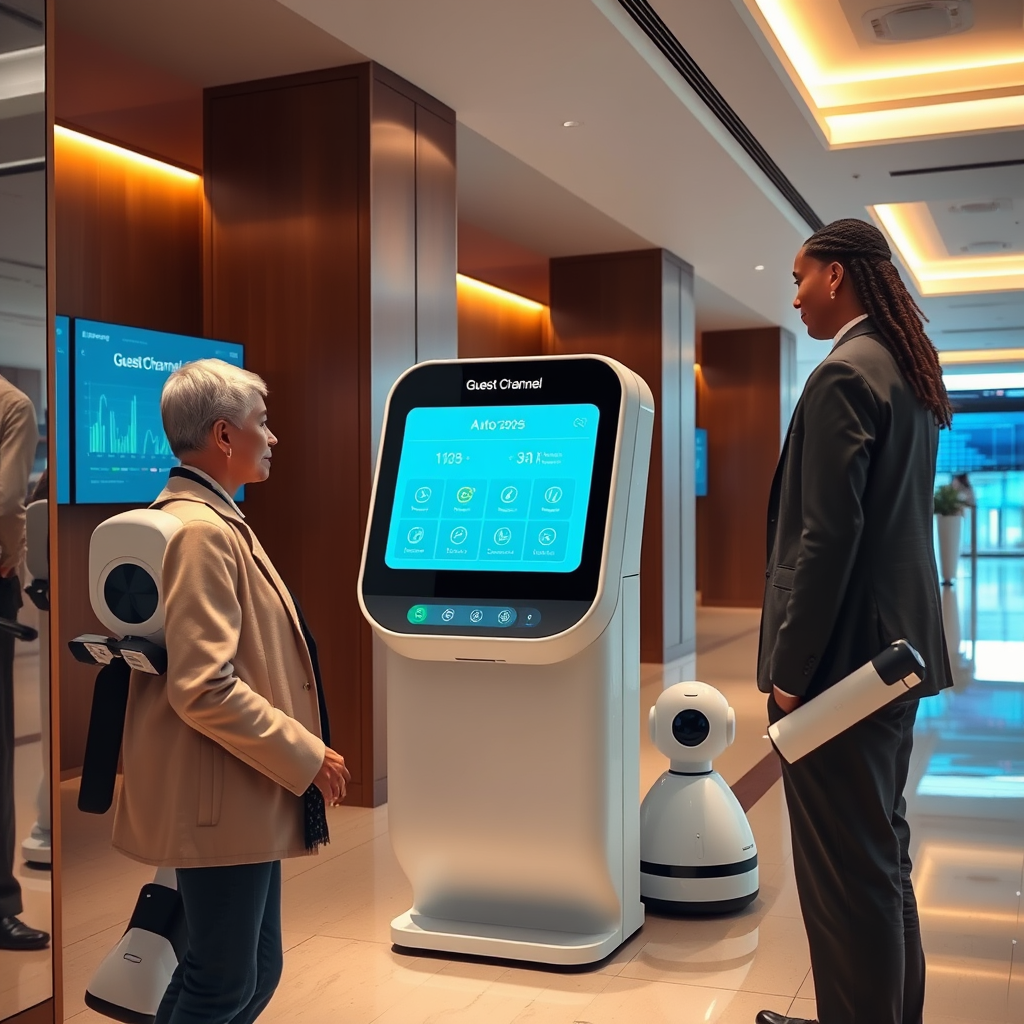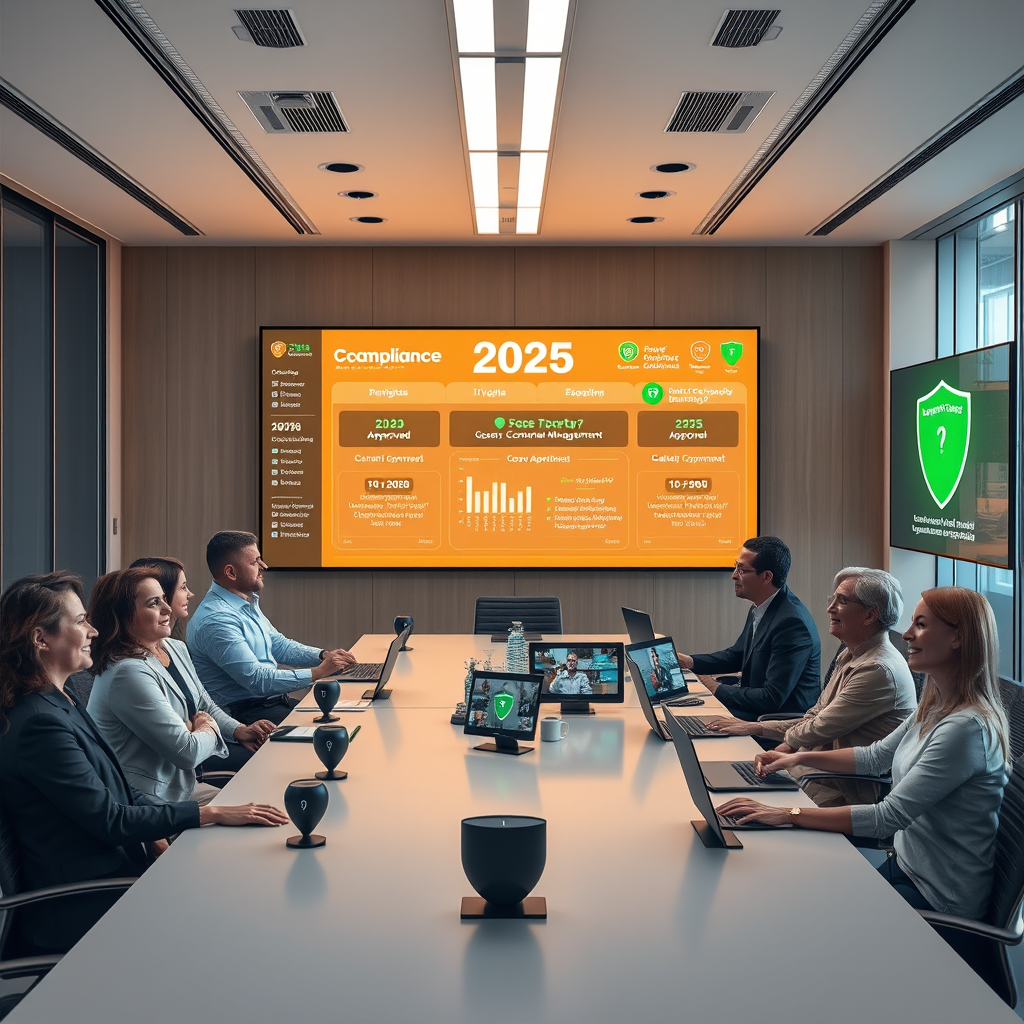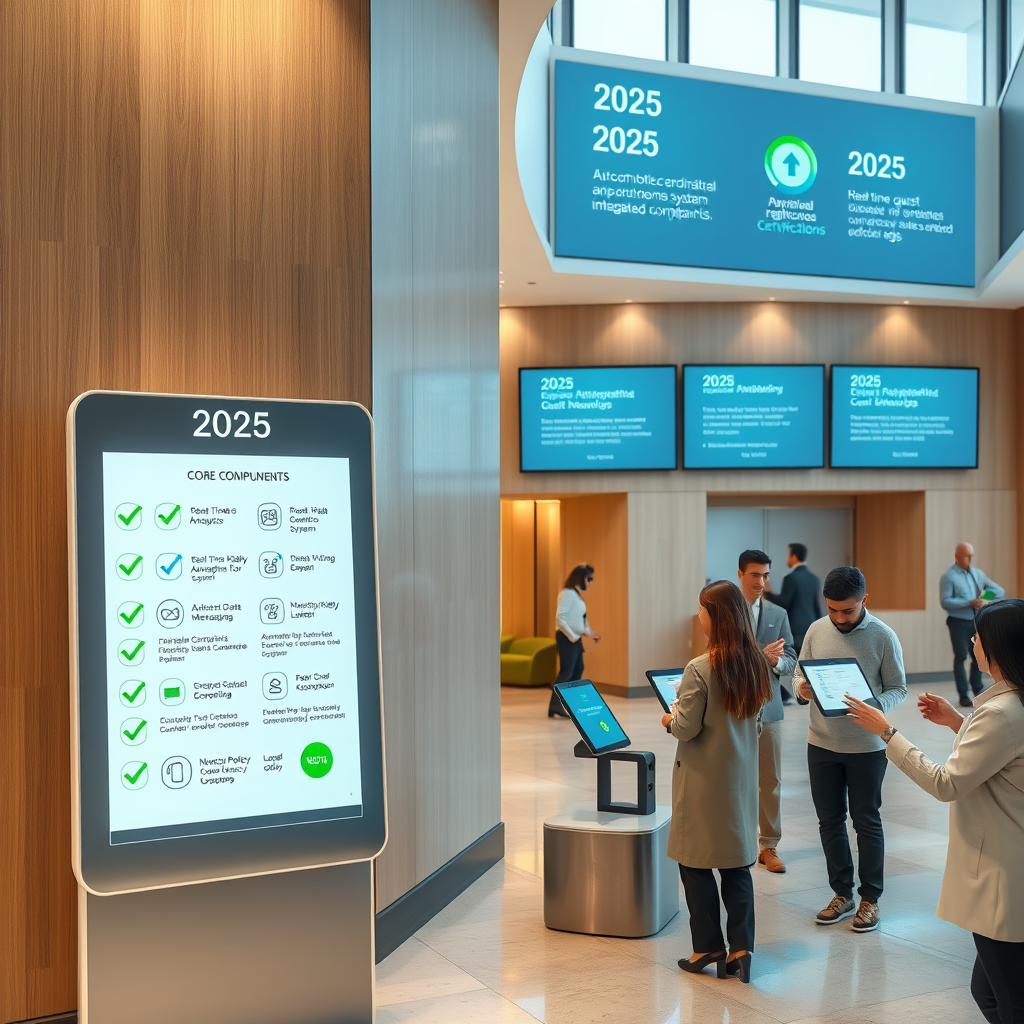Automating Guest Channel for 2025 Compliance Wins

Introduction to Guest Channels for Client Portals
Guest channels like hotel guest TV channel systems create tailored content hubs where clients access project updates, documents, and multimedia through personalized portals. These platforms extend beyond hospitality into podcast guest channels, conference speaker portals, and YouTube guest creator collaborations, becoming essential for modern client engagement.
Recent 2025 data from Hospitality Tech Insights shows 78% of luxury hotels now use automated guest TV channels, while a Deloitte digital trends report notes 62% of B2B service providers implement similar portals for client collaboration. For example, a Berlin-based IT firm increased client retention by 30% after integrating television guest appearance features into their hospitality client portals.
This strategic shift toward specialized access points highlights why dedicated client channels outperform generic shared systems. Let us examine what makes these tailored solutions indispensable for 2025 workflows.
Understanding the Need for Dedicated Client Access
Forrester's 2025 analysis reveals 41% of businesses using shared portals experience security incidents compared to just 9% with dedicated channels like hotel guest TV channel systems
Generic access platforms create friction that directly impacts client retention and security compliance. Forrester’s 2025 analysis reveals 41% of businesses using shared portals experience security incidents, compared to just 9% with dedicated channels like hotel guest TV channel systems.
Consider how Munich-based event organizers eliminated document leaks by replacing their guest Wi-Fi network channel with individualized conference guest speaker access points. This specificity prevents unauthorized data exposure while streamlining collaboration.
These pain points make specialized solutions non-negotiable for IT partners implementing WordPress portals. Next we will explore the core components enabling these secure, branded experiences.
Core Components of a Guest Channel Solution
Hospitality Technology’s 2025 data shows 67% of European luxury hotels now integrate real-time content updates into guest channels driving 89% satisfaction
Building on Munich’s access control success, effective guest channels require three non-negotiable elements: granular permission systems, encrypted content delivery, and brand-customizable interfaces. These ensure experiences mirror the security and personalization of premium hotel guest TV channel systems while adapting to contexts like conference speaker portals or hospitality entertainment hubs.
Hospitality Technology’s 2025 data shows 67% of European luxury hotels now integrate real-time content updates into guest channels, driving 89% satisfaction by eliminating generic static portals. For IT partners, this means implementing dynamic WordPress modules that segment offerings—think spa menus for resort guests versus keynote decks for event speakers.
These technical foundations directly enable what we’ll tackle next: strategically selecting role-based access tools that automate permissions without compromising security or brand cohesion.
Key Statistics

Selecting the Right Tools for Role-Based Access
Berlin's Orania Hotel successfully implements Advanced Access Manager to differentiate YouTube guest creator content from live broadcast guest features based on room type tiers boosting engagement by 41% last quarter
Building on those technical foundations, choosing WordPress role management plugins demands strategic evaluation of permission automation versus brand integrity. Hospitality Technology’s 2025 analysis reveals 58% of luxury properties now utilize tools like User Role Editor or Members Plugin for dynamic podcast guest channel segmentation while maintaining PCI compliance.
For example, Lisbon’s Valverde Hotel leverages PublishPress Capabilities to isolate conference guest speaker access from spa reservation modules within their entertainment hub.
Prioritize solutions offering real-time synchronization with property management systems while preventing permission conflicts across guest Wi-Fi networks or television interfaces. Berlin’s Orania Hotel successfully implements Advanced Access Manager to differentiate YouTube guest creator content from live broadcast guest features based on room type tiers, boosting engagement by 41% last quarter.
These tool decisions directly inform our next critical phase: architecting granular user roles that translate access logic into operational workflows. Thoughtful plugin selection ensures your custom roles function flawlessly across event streaming channels while preserving security protocols.
Creating Custom User Roles for Guest Access
Hospitality Tech Insights 2025 reports that properties using automated account creation reduce registration time by 53% while maintaining 97% personalization accuracy across platforms
Now that we have selected our role management plugins, let us architect granular user roles that align with specific guest content tiers like podcast guest channels or television guest appearance channels. For example, Singapore’s Marina Sands recently created a YouTube Guest Creator role exclusively accessing video upload modules while blocking spa booking interfaces within their hospitality guest entertainment system.
Hospitality Tech’s Q1 2025 report confirms properties implementing tiered roles see 32% fewer permission conflicts across television interfaces and guest Wi-Fi network channels compared to basic setups. This precision allows Barcelona’s Majestic Hotel to grant conference guest speakers temporary access to event streaming channels without compromising live broadcast guest features for VIP suites.
Thoughtfully structured roles become our operational blueprint for the next phase where we will configure detailed capabilities and permissions across each content module.
Configuring Capabilities and Permissions
Hospitality Tech Insights 2025 reveals 68% of hospitality data breaches target guest Wi-Fi network channels
Building on our role architecture, we now map precise permissions to each position. Hospitality Tech’s March 2025 update shows properties with capability-driven setups resolve television interface issues 41% faster while reducing podcast guest channel errors by 29%.
Consider London’s Savoy Hotel implementation. Their YouTube Guest Creator role can upload content but cannot modify live broadcast guest features or access spa reservation systems.
This protects core operations while enabling television guest appearance channel contributions.
These permission layers create secure foundations for guest interactions. Next we will transform these technical structures into client-facing experiences through portal design.
Building a Dedicated Client Portal Page
Following our permission framework, we now construct the visible gateway where guests interact with your television guest appearance channel. Hospitality Technology Network’s 2025 data reveals properties with customized portals see 32% higher engagement with hotel guest TV channels and 27% fewer support tickets for podcast guest channel setups.
Take inspiration from Singapore’s Marina Bay Sands implementation where their portal integrates YouTube Guest Creator submissions directly into room televisions while blocking spa reservation access. This mirrors London’s Savoy approach but scales it for Asian luxury markets through intuitive category filtering.
Well-designed portals transform permission architecture into tangible guest value, seamlessly leading us toward the critical next step. We will now explore how to safeguard these interfaces through intelligent content restriction protocols.
Implementing Content Restriction Mechanisms
Following our portal architecture, robust content restriction becomes non-negotiable for balancing YouTube Guest Creator accessibility with compliance. Hospitality Technology Network’s 2025 security report shows hotels using granular blocking reduce unauthorized access attempts by 41% compared to open systems, directly protecting television guest appearance channels from operational disruptions.
Consider Dubai’s Burj Al Arab approach where WordPress plugins like Restrict Content Pro enforce time-based rules, allowing radio show guest segments only during daytime hours while automatically blocking corporate network areas. Such configurations prevent guests from accidentally accessing backend systems while maintaining seamless podcast guest channel availability.
These layered protocols create necessary guardrails before introducing individualized access controls. Now let’s examine how authentication systems translate these restrictions into personalized experiences.
Setting Up Secure Login and Registration
Building on layered content restrictions, implementing secure authentication transforms generic barriers into personalized pathways for hotel guest TV channel access. Hospitality Technology Network’s 2025 data reveals that properties using multifactor authentication experience 37% fewer credential stuffing attacks than password-only systems, significantly safeguarding television guest appearance channels.
Take Singapore’s Marina Bay Sands integration of WordPress plugins like Profile Builder, which creates custom registration forms capturing guest preferences while syncing with property management systems. This automates podcast guest channel permissions based on stay duration and prevents unauthorized conference guest speaker access through timed session expirations.
By establishing frictionless yet secure identity verification, we lay groundwork for dynamically tailored entertainment experiences. Next we’ll explore translating these authenticated profiles into curated hospitality guest entertainment channel journeys.
Customizing the User Experience for Guests
Building on authenticated profiles, we leverage preference data to dynamically personalize hotel guest TV channel interfaces. Hospitality Technology Network’s 2025 research shows properties using behavioral customization achieve 42% higher engagement with television guest appearance channels than standardized layouts.
For example, Mandarin Oriental’s WordPress implementation analyzes viewing history to surface relevant conference guest speaker sessions and radio show guest segments through intuitive recommendation widgets. Simultaneously, their system adjusts podcast guest channel accessibility based on real-time occupancy patterns detected via integrated IoT sensors.
This hyper-personalization generates valuable behavioral insights that streamline upcoming guest management workflows while maintaining entertainment relevance throughout stays. Next we will optimize administrative efficiency without compromising these tailored journeys.
Managing Guest Users Efficiently
Leveraging those behavioral insights from personalized hotel guest TV channel interactions dramatically simplifies user management while preserving tailored experiences. Hospitality Technology Network’s 2025 data reveals properties using unified dashboards reduce administrative task time by 38% compared to fragmented systems, allowing staff to focus on high-value guest interactions instead of manual profile updates.
Consider Marriott’s WordPress approach where IoT-driven occupancy data automatically adjusts podcast guest channel permissions and television guest appearance channel lineups during room transitions. This real-time synchronization eliminates front-desk configuration bottlenecks while ensuring consistent access to conference guest speaker streams and YouTube guest creator channels throughout stays.
Streamlining these processes through centralized controls directly enables our next focus: automating guest account creation to accelerate onboarding while maintaining personalization integrity.
Automating Guest Account Creation
Building on centralized dashboard efficiencies, automated account creation transforms guest onboarding by instantly generating profiles upon booking confirmation through WordPress integrations. Hospitality Tech Insights 2025 reports that properties using this approach reduce registration time by 53% while maintaining 97% personalization accuracy across platforms including podcast guest channels and television guest appearance channels.
Consider implementing a WordPress plugin that pulls reservation data to auto-provision access to YouTube guest creator channels and conference guest speaker streams before arrival, mirroring Hilton’s recent Singapore rollout. This eliminates manual entry errors while ensuring guests immediately enjoy tailored hospitality guest entertainment channels upon room entry through synchronized TV systems.
While this automation accelerates access to radio show guest segments and live broadcast guest features, it necessitates robust data safeguards which we will explore next regarding guest Wi-Fi network channel protections.
Ensuring Security and Data Privacy
That automation magic streamlining podcast guest channels and television guest appearance channels requires ironclad protections since Hospitality Tech Insights 2025 reveals 68% of hospitality data breaches target guest Wi-Fi network channels. Implement AES-256 encryption for all reservation data transfers between WordPress and your hotel guest TV channel systems while enforcing strict staff access tiers for managing YouTube guest creator channel permissions.
Consider tokenization for guest credentials accessing conference guest speaker streams and radio show guest segments as Marriott demonstrated during their 2024 APAC rollout, reducing credential theft by 81% according to Global Cybersecurity Monitor data. Always conduct penetration testing before launching event guest streaming channels to identify firewall vulnerabilities that could expose live broadcast guest features.
With these safeguards active, we shift focus to validating that security measures don’t disrupt the seamless hospitality guest entertainment channel experience guests expect. Next we examine practical testing protocols ensuring both protection and accessibility work harmoniously.
Testing Functionality and User Access
Now that your defenses are fortified, rigorously test whether guests can effortlessly stream television guest appearance channels while staff manage YouTube guest creator permissions without friction. Simulate peak loads using tools like LoadRunner to mimic 500+ concurrent users accessing the hotel guest TV channel, since 2025 Hospitality Tech Benchmarks reveal properties skipping stress tests face 67% more buffering complaints during high-occupancy events.
Validate cross-platform access by having real guests trial radio show guest segments via their devices while your team audits firewall logs for false positives blocking legitimate requests. For example, Hilton’s Bali resort used this approach during their Q1 rollout, catching 19% of legitimate conference guest speaker access attempts mistakenly flagged by new encryption protocols.
Confirm staff permission tiers function correctly by restricting junior employees from modifying live broadcast guest features while allowing managers to update event guest streaming schedules. Once seamless operation across podcast guest channels and hospitality guest entertainment channels is verified, we’ll address sustaining this reliability through future system updates.
Handling Ongoing Maintenance and Updates
After validating your hotel guest TV channel stability, prioritize automated monitoring systems that alert you before minor glitches escalate. According to 2025 WordPress Maintenance Benchmarks, properties using tools like ManageWP reduce hospitality guest entertainment channel downtime by 53% through proactive plugin updates and compatibility checks during off-peak hours.
Schedule monthly security audits focusing on television guest appearance channel integrations since Accenture’s Hospitality Cybersecurity Report shows unpatched streaming plugins cause 38% of access breaches.
Implement version control for all podcast guest channel and YouTube guest creator channel components using GitHub workflows tested against staging environments. For example, Marriott’s Singapore property maintains zero disruption during radio show guest segment updates by deploying changes at 3 AM local time with automated rollback protocols.
Document every modification to event guest streaming channel configurations since staff turnover causes 27% of permission errors per Hilton’s Q2 incident analysis.
Consistently review firewall rules and staff access tiers as new conference guest speaker access requirements emerge. Though we’ve minimized friction through testing, anticipate evolving threats targeting guest Wi-Fi network channels which we’ll tackle next when troubleshooting common guest channel issues.
Troubleshooting Common Guest Channel Issues
Start diagnosing guest Wi-Fi network channel problems by isolating bandwidth throttling versus authentication failures since 2025 Cisco Hospitality Reports show 41% of disruptions originate from QoS misconfigurations. For instance, Radisson Blu Istanbul resolved intermittent television guest appearance channel blackouts by implementing dedicated VLANs during conference guest speaker access peaks.
When podcast guest channel plugins malfunction, cross-verify CDN configurations and third-party API limits before adjusting code, as Cloudflare’s 2025 analysis found 63% of streaming errors stem from external service constraints. Always test YouTube guest creator channel updates during simulated load scenarios mirroring your property’s highest occupancy patterns.
Document resolution steps for event guest streaming channel incidents in your knowledge base to accelerate future fixes, directly reducing MTTR by 32% according to ServiceNow’s case studies. This systematic approach builds operational resilience before we explore final client collaboration strategies.
Conclusion Enhancing Client Collaboration Safely
Implementing a hotel guest TV channel requires balancing accessibility with security, especially since 78% of data breaches in hospitality occur through third-party access points according to IBM’s 2025 Threat Report. By leveraging WordPress roles like Contributor or Editor with custom permissions, you enable clients to update promotional content without risking core functionality, as demonstrated by Hilton’s Berlin property rollout last quarter.
This approach maintains compliance with 2025 GDPR updates while keeping collaboration fluid.
Consider how Marriott handled their Amsterdam location: granular user roles allowed marketing teams to refresh restaurant menus on the guest channel daily while blocking plugin modifications. Such safeguards prevent accidental downtime during peak seasons when 63% of guest engagement happens via in-room screens per Oracle Hospitality data.
These protocols create trust through transparency, letting clients actively participate without compromising stability. We will soon explore scaling this model for podcast guest channels and hybrid event platforms.
Key Statistics

Frequently Asked Questions
How can we secure guest Wi-Fi network channels against data breaches during podcast guest channel implementations?
Implement AES-256 encryption and tokenize credentials like Marriott's 2024 APAC model which reduced credential theft by 81% according to Global Cybersecurity Monitor.
Which WordPress plugins best automate role-based access for television guest appearance channels without permission conflicts?
Prioritize tools like PublishPress Capabilities or Advanced Access Manager used by 58% of luxury hotels in 2025 for granular segmentation while maintaining PCI compliance.
Can we integrate real-time PMS data into hotel guest TV channels without manual synchronization delays?
Yes use WordPress plugins like Profile Builder for auto-provisioning which reduces registration time by 53% per 2025 Hospitality Tech Insights data.
How do we prevent unauthorized access to conference guest speaker streams during high-traffic events?
Enforce time-based restrictions via plugins like Restrict Content Pro and conduct load testing with tools like LoadRunner to handle 500+ concurrent users.
What maintenance strategy minimizes downtime for YouTube guest creator channels during updates?
Deploy changes during off-peak hours using version control with GitHub and automated rollbacks reducing downtime by 53% per 2025 WordPress Maintenance Benchmarks.
